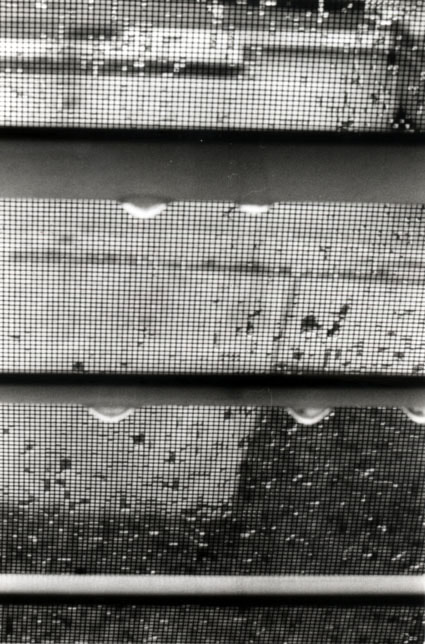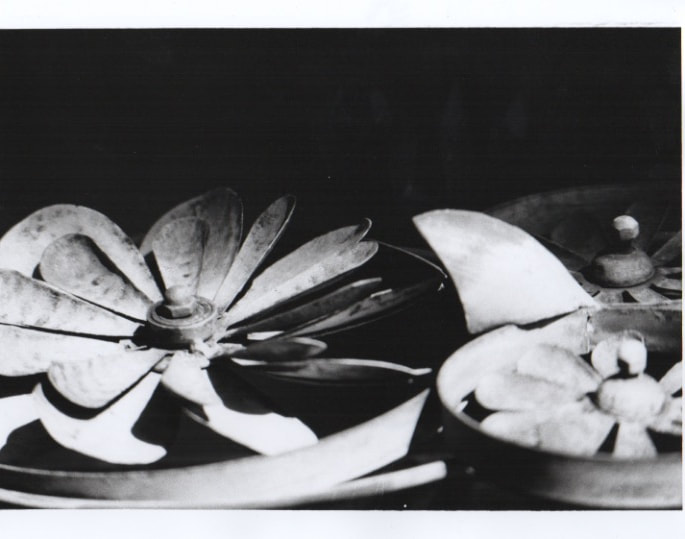- Home
-
PHOTO 1
-
PHOTO 2
-
PHOTO 3
- INFO >
- CLASS NOTES
-
ASSIGNMENTS
>
- STUDIO LIGHTS
- Composing: Creating an Abstract or Geometric Composition
- Composing: Creating an Abstract or Geometric Composition
- EMPHASIS ON COLOR THEORY
- DESIGNING IN B&W
- Formal and Informal Portraits
- CUBIST PORTRAITS
- NATURAL LIGHTING
- COMPOSITION - SCAVENGER HUNT
- STREET PHOTOGRAPHY
- MANDALA
- NIGHT
- RHYTHM & REPETITION
- PATTERNS & RHYTHM WITH LIGHT
- STUDIO PORTRAITURE
- PHOTOGRAM - MEMOIRS - THE DIGITAL VERSION
- HDR Landscapes
- PORTFOLIO
- VIDEOS
- HANDOUTS
- GALLERY
-
AP 2D ART + DESIGN
- INFO >
- SUMMER PROJECT
- SUSTAINED INVESTIGATION
- ELEMENTS + PRINCIPLES
- STUDIO LIGHTS
-
ASSIGNMENTS
>
- DESIGNING IN B&W
- COLOR THEORY
- TRIPTYCH
- SUSTAINED INVESTIGATION #1
- SUSTAINED INVESTIGATION #2
- SUSTAINED INVESTIGATION #3
- SUSTAINED INVESTIGATION #4
- SUSTAINED INVESTIGATION #5
- SUSTAINED INVESTIGATION #6
- SUSTAINED INVESTIGATION #7
- SUSTAINED INVESTIGATION #8
- SUSTAINED INVESTIGATION #9
- SUSTAINED INVESTIGATION #10
- ABSTRACT & GEOMETRIC COMPOSITION
- STUDIO PORTRAITURE
- TEXTURES & ABSTRACTIONS FROM THE...
- WEBSITE PORTFOLIO
- CLASS NOTES
- HANDOUTS
- VIDEOS
- GALLERY
- 3D ART 1
- 3D ART 2
- 3D ART 3
- Contact
OBJECTIVES:
ABSTRACT ART uses a visual language of form, color and line to create a composition which may exist with a degree of independence from visual references in the world.
….thought of apart from concrete realities, specific objects, or actual instances
…..of or pertaining to the formal aspect of art, emphasizing lines, colors, generalized or geometrical forms, etc., especially with reference to their relationship to one another.[
PATTERN, from the French patron, is a type of theme of recurring events or objects, sometimes referred to as elements of a set. These elements repeat in a predictable manner.
….a decorative design, as for wallpaper, china, or textile fabrics, etc…
WHAT TO DO
Look at examples of abstract and pattern images. For this assignment you will FILL IN THE FRAME. Look around, observe patterns in nature, in landscapes, in the city, in objects, etc…. An abstract image can be achieved by getting in close and including the MINIMAL. Abstract can relate to shape, lines and forms of objects, people, places, etc. Look for texture, shapes, lines, BE CREATIVE!
Look up Abstract photography for ideas... Look at the work of Aaron Siskind or Jan Groover.
REMEMBER NOT ALL LENSES CAN GET EXTREMELY CLOSE. Unless your lens says MACRO on it, you usually have to be from 1 to 2 ft away. At this point using your zoom on your lens will be a good idea.
PLEASE FOCUS!!!! AND REMEMBER IF IT DOESN’T LOOK FOCUSED THROUGH THE LENS… IT’S NOT!
EXPOSURE
By now you should have a full understanding when metering and which techniques should be applied.
First, set your ISO to 400.
We discussed several metering techniques that should improve your exposure on your negatives! PLEASE USE IT.
Many of you are not metering properly or AT ALL. It is crucial that you do, because without properly exposed negatives you will not have good prints!!!!
Spot Metering: to spot meter, you must zoom and fill in your frame with the area you would like to meter specifically. Set your aperture, meter, set your shutter speed and re-compose you image.
Metering for 18% grey: Unless you have a grey card, you must use this technique to meter. Find you shadow, or a shadow around you. Zoom and fill in your frame with the area you would like to meter specifically. Set your aperture, meter, set your shutter speed and re-compose you image.
Many are still experiencing the typical “camera shake”. Remember the shutter speed for a hand held camera must be as fast as the lens focal length. Otherwise the picture is likely to be blurry due to camera motion. A normal 50 mm lens requires 1/60th of a second or faster when hand-holding the camera (1/60th is shown as a simple 60 on the camera). Wide angle lenses (28 mm or 35 mm) can be sharp at 1/30th of a second. A 100 mm telephoto lens requires 1/125th of a second for a hand-held camera.
Adjust the shutter speed and the aperture according to the light meter's recommendations. Ask about this if you are not certain.
THINGS TO DO AS YOU ARE TAKING THE PICTURES
Look at your notes for creating a good composition. Keep these tips in mind.
LOADING THE CAMERA
WATCH THE VIDEO TUTORIALS IF NEEDED.
PROCESS FILM AND CONTACT PRINT THE NEGS
See appropriate instructions and in-class demonstrations. After processing examine the negatives for exposure and contrast range. Note any irregularities and be sure to find out the reason for them.
Create a contact sheet with your negatives. It is easier to make compositional choices from positive than from negatives. It is better to make exposure choices from the negatives themselves. Circle or mark at least 5 photos that you feel are your best. Make sure they are marked before turning them to be graded.
PRINTING
Save every test strip and ruined piece of paper used while printing this assignment. We will discuss this during critique. We can often think of ways to cut waste and your cost. A certain amount of waste will always happen. It is not counted against you in the grade, but you pay for the paper.
Print 4 prints (8x10 inches).
FEEDBACK
During critique you will be able to discuss the results with the instructor and students in class. Bring all prints, wasted paper, negatives, contacts, shooting record and printing records.
ABSTRACT ART uses a visual language of form, color and line to create a composition which may exist with a degree of independence from visual references in the world.
….thought of apart from concrete realities, specific objects, or actual instances
…..of or pertaining to the formal aspect of art, emphasizing lines, colors, generalized or geometrical forms, etc., especially with reference to their relationship to one another.[
PATTERN, from the French patron, is a type of theme of recurring events or objects, sometimes referred to as elements of a set. These elements repeat in a predictable manner.
….a decorative design, as for wallpaper, china, or textile fabrics, etc…
WHAT TO DO
Look at examples of abstract and pattern images. For this assignment you will FILL IN THE FRAME. Look around, observe patterns in nature, in landscapes, in the city, in objects, etc…. An abstract image can be achieved by getting in close and including the MINIMAL. Abstract can relate to shape, lines and forms of objects, people, places, etc. Look for texture, shapes, lines, BE CREATIVE!
Look up Abstract photography for ideas... Look at the work of Aaron Siskind or Jan Groover.
REMEMBER NOT ALL LENSES CAN GET EXTREMELY CLOSE. Unless your lens says MACRO on it, you usually have to be from 1 to 2 ft away. At this point using your zoom on your lens will be a good idea.
PLEASE FOCUS!!!! AND REMEMBER IF IT DOESN’T LOOK FOCUSED THROUGH THE LENS… IT’S NOT!
EXPOSURE
By now you should have a full understanding when metering and which techniques should be applied.
First, set your ISO to 400.
We discussed several metering techniques that should improve your exposure on your negatives! PLEASE USE IT.
Many of you are not metering properly or AT ALL. It is crucial that you do, because without properly exposed negatives you will not have good prints!!!!
Spot Metering: to spot meter, you must zoom and fill in your frame with the area you would like to meter specifically. Set your aperture, meter, set your shutter speed and re-compose you image.
Metering for 18% grey: Unless you have a grey card, you must use this technique to meter. Find you shadow, or a shadow around you. Zoom and fill in your frame with the area you would like to meter specifically. Set your aperture, meter, set your shutter speed and re-compose you image.
Many are still experiencing the typical “camera shake”. Remember the shutter speed for a hand held camera must be as fast as the lens focal length. Otherwise the picture is likely to be blurry due to camera motion. A normal 50 mm lens requires 1/60th of a second or faster when hand-holding the camera (1/60th is shown as a simple 60 on the camera). Wide angle lenses (28 mm or 35 mm) can be sharp at 1/30th of a second. A 100 mm telephoto lens requires 1/125th of a second for a hand-held camera.
Adjust the shutter speed and the aperture according to the light meter's recommendations. Ask about this if you are not certain.
THINGS TO DO AS YOU ARE TAKING THE PICTURES
Look at your notes for creating a good composition. Keep these tips in mind.
- Vertical/horizontal
- Different point of view
- Rule of thirds
- Content/subject
- Get close
- Fill the frame
- Depth of Field
- Avoid distracting backgrounds
- Leading lines
- Shapes
- Contrast
- Emphasis
- Balance
- Sharpness
LOADING THE CAMERA
WATCH THE VIDEO TUTORIALS IF NEEDED.
PROCESS FILM AND CONTACT PRINT THE NEGS
See appropriate instructions and in-class demonstrations. After processing examine the negatives for exposure and contrast range. Note any irregularities and be sure to find out the reason for them.
Create a contact sheet with your negatives. It is easier to make compositional choices from positive than from negatives. It is better to make exposure choices from the negatives themselves. Circle or mark at least 5 photos that you feel are your best. Make sure they are marked before turning them to be graded.
PRINTING
Save every test strip and ruined piece of paper used while printing this assignment. We will discuss this during critique. We can often think of ways to cut waste and your cost. A certain amount of waste will always happen. It is not counted against you in the grade, but you pay for the paper.
Print 4 prints (8x10 inches).
FEEDBACK
During critique you will be able to discuss the results with the instructor and students in class. Bring all prints, wasted paper, negatives, contacts, shooting record and printing records.























































